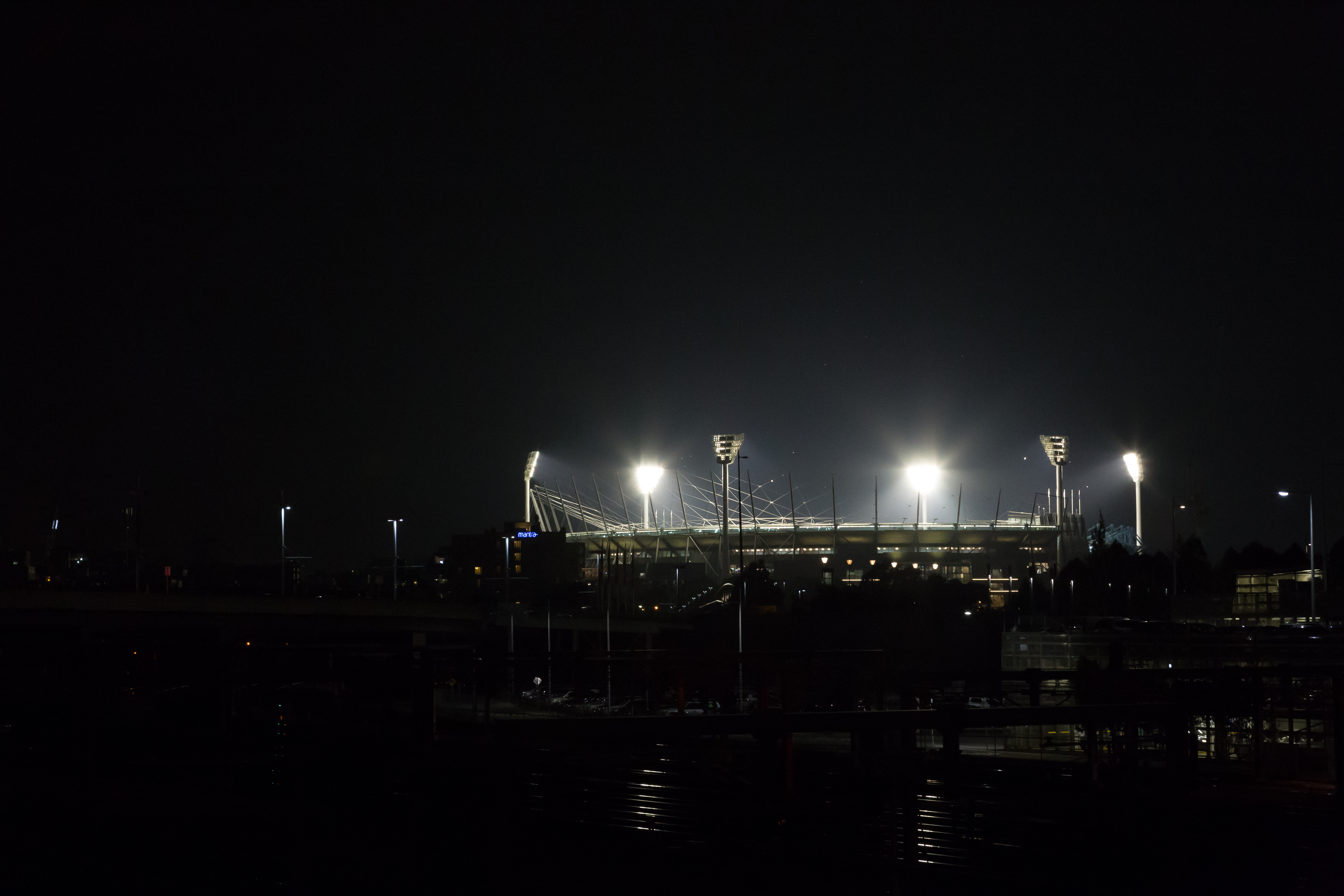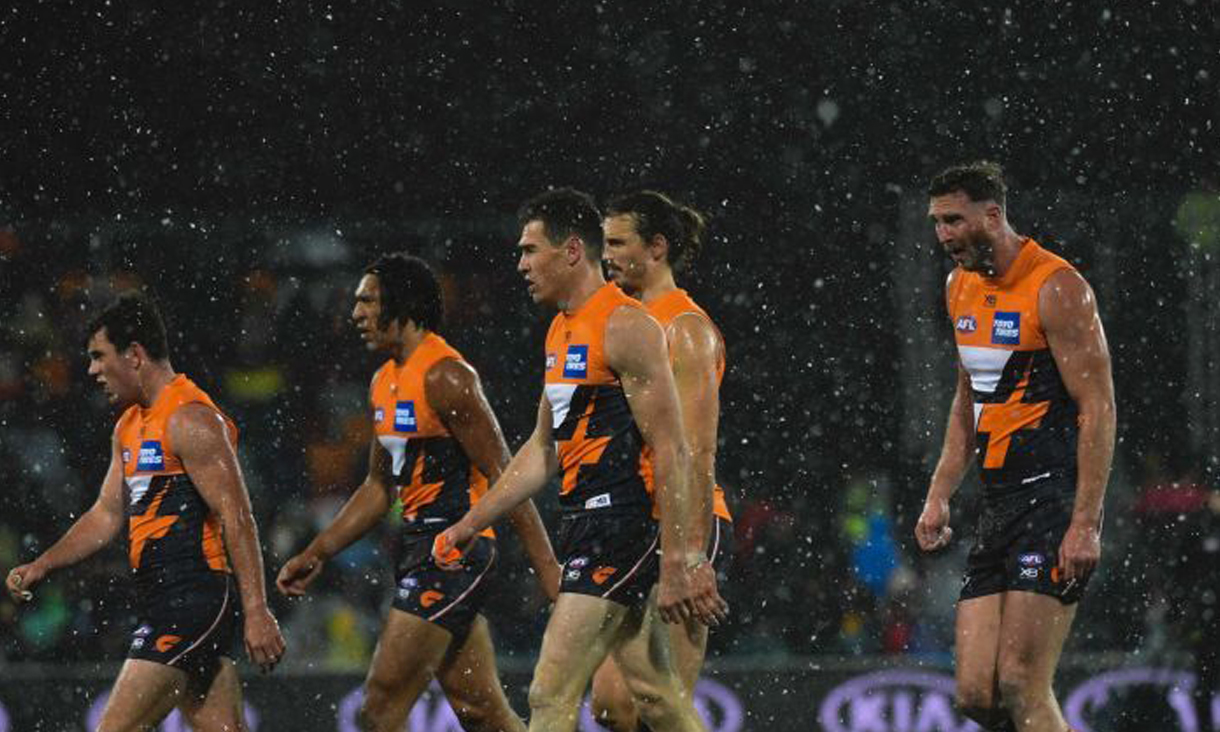A league of their own
A quick note for readers not steeped in AFL language and history: there is a distinction between Australian Rules football — the game itself — and the Australian Football League (AFL) — the national professional league.
While the acronym AFL is often used to describe the game of Australian Rules, Fact Check has used the term to refer to the league.
And it wasn't always called the AFL — what is now the Australian Football League was first the Victorian Football League (VFL).
Established in 1896, the VFL initially consisted of eight foundation clubs: Carlton, Collingwood, Essendon, Fitzroy, Geelong, Melbourne, St Kilda and South Melbourne.
The VFL became the AFL in 1990, and now has 18 teams, with clubs as far west as Fremantle in Western Australia and as far north as Brisbane in Queensland.
Has it happened before?
Snow began to fall towards the end of the first quarter of the recent match between Melbourne's Hawthorn Football Club and the Greater Western Sydney Giants, delighting the crowd despite near the freezing conditions.
Where commentators, fans and news reports have talked of the snowy game being the first in the history of AFL, Fact Check has deemed this to refer to the history of the official VFL/AFL premiership competition.
AFL historians contacted by Fact Check were unable to provide any previous examples of snow during a VFL/AFL game.
As one expert told Fact Check: "It may be that this is the only game — in living memory — in which snow has fallen during play."
Certainly, Fact Check was unable to find any evidence of snow falling on an Australian Rules competition match since the formation of the national AFL in 1990.
To check whether snow may have fallen during a VFL game, Fact Check took to Trove, the National Library of Australia's archive service, to see if anything showed up in old news reports.
The closest example of a VFL/AFL match played in snow comes from an 1899 article, appearing in a weekly magazine called The Australasian, which detailed brief snowfall at a VFL exhibition match (as opposed to a competition match) in Ballarat.
"It certainly was wet weather during the later stages, when, alternating with the rain, a couple of slight falls of snow added variety as well as novelty to the experience of the visitors," the Australasian reported.
Daryl Adair, Associate Professor of Sport Management at the University of Technology Sydney, pointed Fact Check to a 1952 article in The Argus daily newspaper, detailing snowfall in Melbourne the day before the opening game of that year's VFL season.
A quote from a "weather bureau official" warned Melburnians to "expect anything", including snow, at the football.
"This is one of the maddest meteorological times of the year," the official said.
But snow does not seem to have eventuated, with the following Monday newspaper making mention only of "heavy showers" falling just before the matches began.
Young Rupert wears the pants
While not an AFL match, Trove did surface an excellent confluence of Australian Rules football, snow, an Australian prime minister's daughter and a young future media tycoon.
A December 1952 article in a Broken Hill newspaper details a snowball fight in London involving "Miss Heather Menzies, daughter of Australia's Prime Minister".
The fun took place after an Australian Rules match played in four inches of snow by Australian students from Oxford and Cambridge, many of whom were wearing gloves.
And who umpired that match? A young Rupert Murdoch, who, according to the article, was wearing "long trousers".
The local leagues
While Fact Check was unable to find any examples of snow at official VFL/AFL matches, a Trove search shows there have been numerous instances of snow during local games.
A 1948 report described football players in the Tasmanian Midlands brushing snow from the ball before putting it to their boots.
"Snow caked between the stops of players' boots, with the result that the footballers skidded and slithered here and there like ice hockey players," the report in the Examiner said.
"Spectators lit a bonfire to keep warm and at half-time rival factions had a snow fight."
The Examiner also reported that grammar school teams in Tasmania played in "nearly an inch of snow" on particular chilly June morning in 1964.
In Victoria, football players in Ballarat in 1911 appealed for a game to end early after snow made it "impossible to distinguish the players at any distance".
"That could not be done, however, and the men had to continue in the snow," read the report in the Albury paper the Border Morning Mail and Riverina Times.
"When the game ended there was a rush for cabs and trains. Half an hour afterwards the football ground was a sheet of white."
A report from 1928 also detailed a snowy game in Ballarat. The article, in The Sporting Globe, closed with the observation that "if these conditions continue there may be snowballing as well as footballing".
And in 1946, a "heavy snowstorm" disrupted a game in Corryong near the border between NSW and Victoria.
"Players wore knotted handkerchiefs over their heads, whilst spectators huddled in cars and under umbrellas," The Age reported.
The National Rugby League
While there may be no evidence for snow during an AFL match, the recent game at Manuka Oval was not the first time snow had fallen on a professional football game of any code in Canberra.
In May 2000, for example, the Canberra Raiders took on the Wests Tigers at Manuka Oval in a National Rugby League game that was played with snow on the ground.
While the recent snowy game is likely to have been an AFL first, an increasing number of professional games are being played in the colder climates of Tasmania, Canberra and Ballarat, so we may not have to wait another century for it to happen again.
Principal researcher: Ellen McCutchan
For full story, visit the RMIT ABC Fact Check website.





